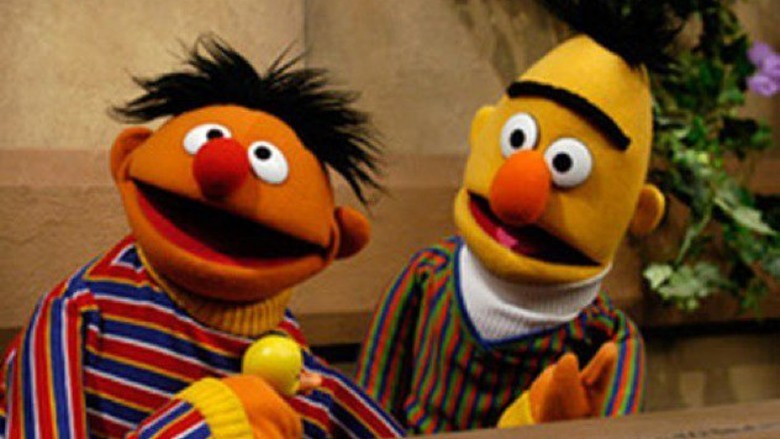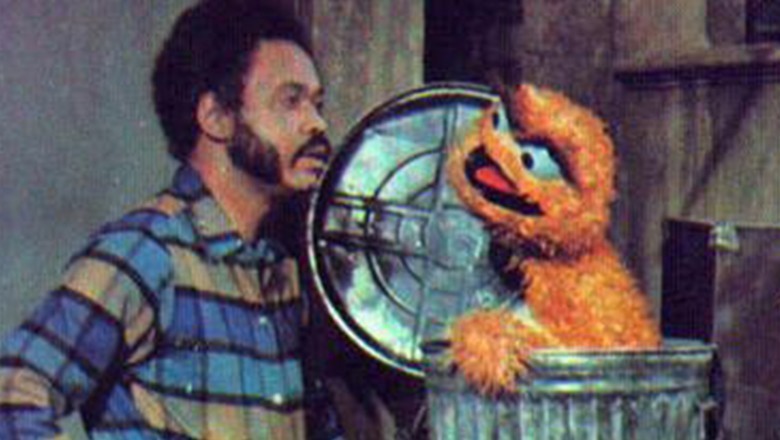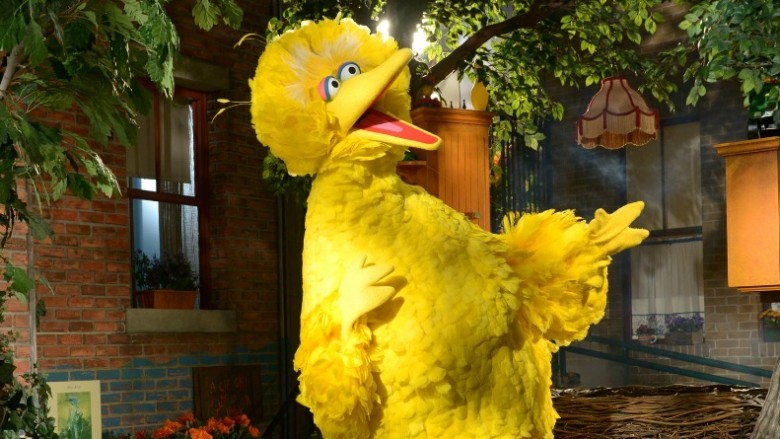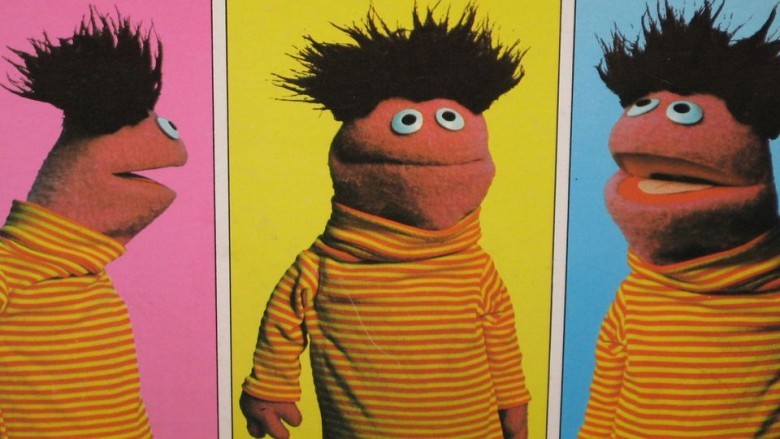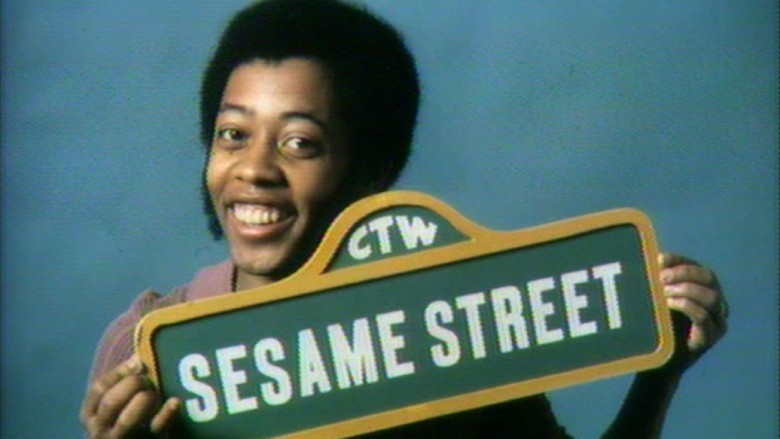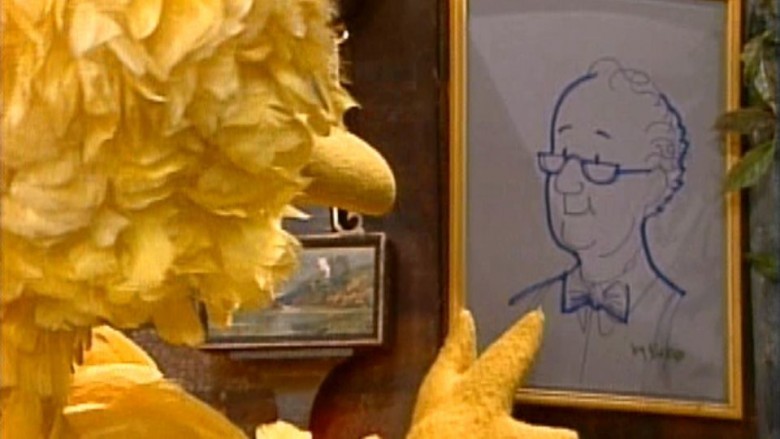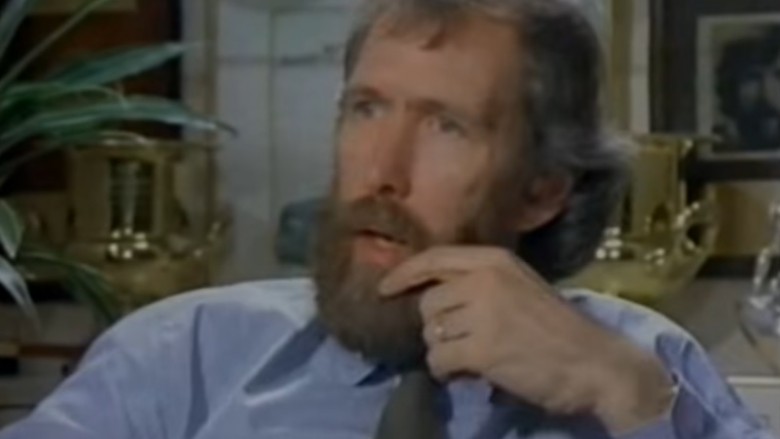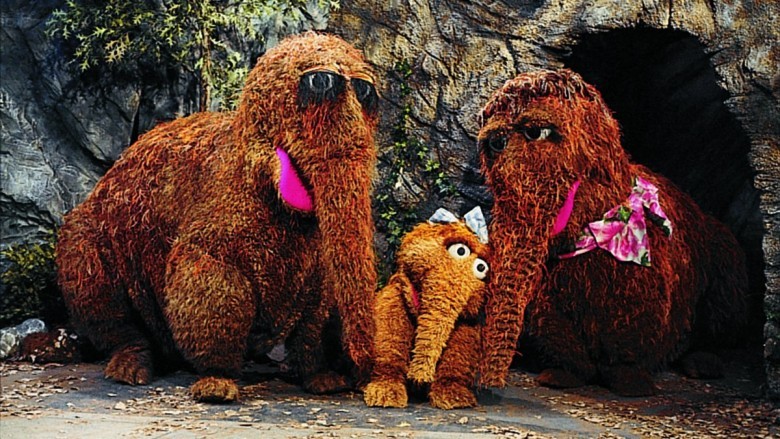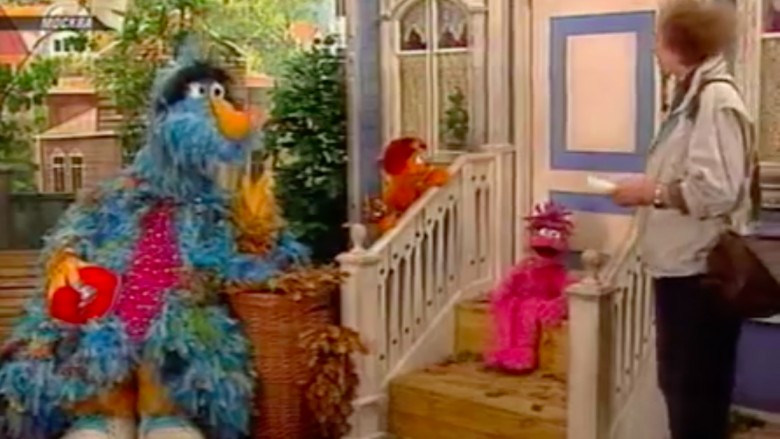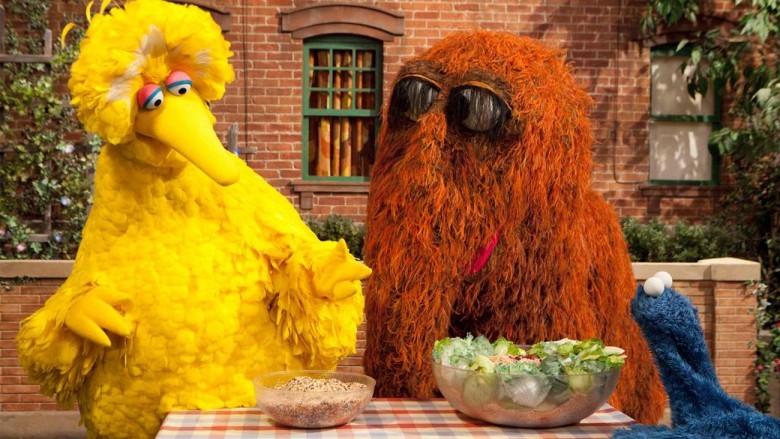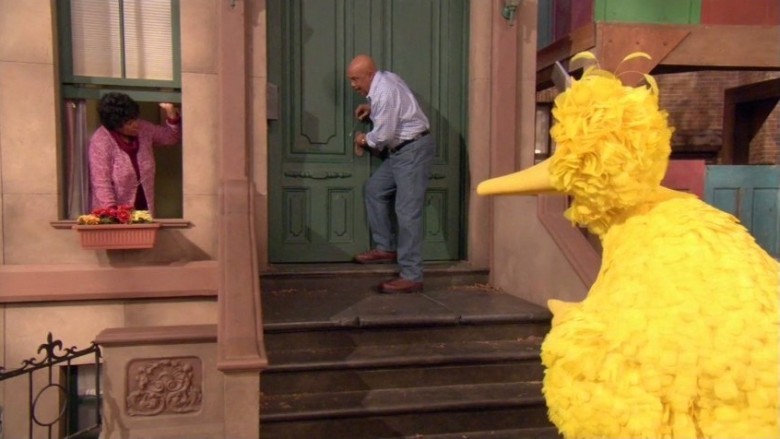The Untold Truth Of Sesame Street
The pioneering children's program Sesame Street has somehow been on the air for over four decades (four! ah ah ah) and counting. But, like any long-running show, what shows up on the screen isn't necessarily reflective of what it takes to get it there. With such a combustible mix of creative personalities, there were bound to be salacious and secret stories behind the scenes. Such as:
Early episodes are now for "Adults Only"
When Sesame Street first premiered in the fall of 1969, it was a instant hit, with viewers and critics alike. Time Magazine featured Big Bird on its cover, and declared the series, "not only the best children's show in TV history ... [but] one of the best parents' shows as well." Still, while the show's mix of humor, music, and education immediately connected with viewers, it was still very much a work in progress. Those early episodes feel almost like a different show, from a distinctly different time. That might be why, when they were repackaged and sold on DVD a few years ago, they were labeled "Adults Only."
Now, before you start wondering if they showed Bert and Ernie finally consummating their long-simmering, um, tension, it's not that type of "Adults Only." It's more like that the characters, across the board, were darker. Kermit had a hair-trigger temper and would berate his friends. Count von Count was a depressing downer, complaining how how lonely he was all the time. Cookie Monster tended to smoke (and sometimes eat) a trusty pipe. Kids rode bikes without helmets and played on empty construction sites. The very first episode even featured Gordon taking a little girl's hand — a girl he'd just met — and leading her into his apartment for some ice cream and ... well, hopefully just ice cream. You can imagine why that might not be the best lesson for the show's young viewers.
Big Bird almost died on the Challenger
There are a lot of "What If" moments in history, and boy did 1986 offer up a doozy of a what-if. It seems that, back in the '80s, NASA was desperate to get kids interested in space travel again. One idea they had was to invite everyone's favorite eight-foot tall canary, Big Bird, to hitch a ride into space.
Apparently, they sent a letter to Caroll Spinney, the Muppeteer behind the bird, asking if he would be willing to join a mission to orbit the Earth in character. Unfortunately, the costume wouldn't fit on the shuttle, and so the idea was scraped. A teacher was instead invited to take part — that teacher? Christa McAuliffe. The shuttle? The Challenger. As everyone remembers, that mission would be cut drastically short when the shuttle exploded shortly after launch.
As Spinney recalled in an essay for The Guardian in 2015, "we took a break from filming to watch takeoff, and we all saw the ship blow apart. The six astronauts and teacher all died, and we just stood there crying." So, what would have happened if Big Bird was on that flight? Can you imagine the sheer terror a generation of kids would have been subjected to if they had to watch their favorite Muppet die a horrifying death, live on television? How would the world look back on it, if we lost not just a collection of heroes, but one of the most beloved characters in the history of children's entertainment?
An early popular character was cut for being too racist
Would you be surprised to learn that, in the early days of Sesame Street, there were few characters more popular than Roosevelt Franklin? Who? Exactly. Roosevelt was a rambunctious student who often took over his classes at Roosevelt Franklin Elementary School, teaching lessons about respect and family and why you should avoid drinking poison. He was so popular, he was actually the first character from the show to record his own LP, the aptly titled "The Year of Roosevelt Franklin." And really, when you're so cool the school you attend names itself after you, what can't you do?
And then, in 1975, he vanished. Sadly, it seems the poor little guy was taking heat from all sides. David Borgenicht wrote in his book, Sesame Street Unpaved, upper middle-class members of the black community viewed the character as a negative cultural stereotype. Meanwhile, some black intellectuals, namely Chicago schoolteacher turned doctoral candidate Barbara H. Stewart, were upset the character didn't "employ Black Language." For example, she claimed he would say, "'she says' (versus "she say"), "who was to blame" (versus "who be to blame" and "an L" (versus "a L")" She went on to say that the show should sprinkle in a "honey child or man," here and there, for good measure. He was apparently brought to us by the letter U, as in "U can't win."
Despite vigorous opposition from Sesame Street's black performers, the show decided they didn't want to succumb to controversy, removed the character, and honey child, we've never heard from him again.
One cast member completely lost his mind
"I'm David of Sesame Street and they're trying to kill me." That's what actor Northern Calloway, who played law student David from 1971 through 1989, screamed while strapped to a stretcher, wearing nothing but a Superman T-shirt, after a rampage through the streets of Nashville.
In 1980, when the Sesame Street performer had been in the city for a personal appearance, things came off the rails. Calloway had been fine during his performance, but soon thereafter beat a woman with an iron rod, and ran through the streets shattering windows, breaking into homes, and smashing the windshield of a car. Sgt. Joel Goodwin was quoted by The Nashville Tennessean as saying that Calloway, "left a trail of blood wherever he ran." One man, Douglas Wright, even fired a shot at the Sesame Street performer when he ran naked into his garage.
In court for his misdeeds, Calloway told the judge, "it will be a sad, sad thing for the children to hear about this ... I can't remember a thing. I've never had a spell like this before." That may not have been true. In the book Street Gang: The Complete History of Sesame Street, other episodes of Calloway's deteriorating mental health were documented. he bit music coordinator Danny Epstein once, during an on-set fight, and had to be put on lithium for severe manic-depression. He was eventually let go from the show, and died of stomach cancer in 1990. While his health issues and early death were a tragedy, the show has continued to honor him by naming Elmo's favorite toy after the character he played, David.
That time death came to Sesame Street
Death isn't an easy subject, whether you're two or two hundred, so you can imagine the hand-wringing when beloved cast member Will Lee passed away suddenly, and the creative team had to decide how to deal with it on air.
Lee, as the beloved shopkeeper Mr. Hooper, had been a fixture on the show from the very first episodes. With his unexpected death, Sesame Street's mantra to use everyday events as teachable moments would be put to the ultimate test. Various options were bandied about. Mr. Hooper could move away, or be replaced with a different actor. But in the end, the team decided to trust that kids could handle the difficult subject matter, if they were extremely careful in how they tackled it.
"Farewell, Mr. Hooper" told the story of Big Bird learning that his friend wouldn't be around anymore, not to sweep out front of his shop or make any more birdseed milkshakes. The show skipped out on any spiritual or religious mumbo-jumbo. Mr. Hooper was gone, and he wasn't coming back. When Big Bird asked Gordon why it had to be this way, his answer was both sad and profound: "Just because."
As Carol Spinney recalled, "it was probably the most sensitive show we've ever done. When we finished there were tears on all the actors' faces. When I came out of the suit, I had to have a towel because I had been crying." The series would win both a Peabody and a Daytime Emmy for the effort.
Jim Henson nearly turned down Sesame Street
Jim Henson was an icon of the 20th century, creating a form of entertainment whole cloth out of, well, cloth. Also, a metric ton or ten of imagination. But, if not for the pressure he received from Sesame Street co-creator Joan Ganz Cooney, he may have simply remained a puppeteer with a delusional dream.
Henson had, without a doubt, early successes with his Muppet creations, from Madison Avenue to The Ed Sullivan Show to Saturday Night Live, but he was stuck in a rut when the Sesame Street gig presented itself. Even with no clear way forward, Henson wasn't interested. He didn't consider himself a children's entertainer — according to Cooney, he didn't want to get trapped in the box of "little kiddie entertainment." Thankfully, thanks to some pleading from the Children's Television Workshop team, who were putting the project together, he reconsidered. Naturally, Sesame Street, and its Muppet stars, became instant hits, and helped launch Henson to the next level. Plus, as Cooney recalled, Jim had always dreamed of producing a show like The Muppet Show, but it was the cache he earned from that "little kiddie entertainment" show that allowed him to finally produce it. Sometimes, you gotta start cute before you can get edgy.
A lost episode dealt with divorce
Their hearts were in the right place. That's the only way to view "Snuffy's Parents Get a Divorce," an episode of Sesame Street produced in 1992 to address the real elephant in the room: kids' parents separating.
The idea was to have Mr. Snuffleupagus deal with the demise of his own parents' relationship, normalizing something happening in many of their viewers' lives. They even brought in Norman Stiles, who wrote the 1983 episode dealing with the death of Mr. Hooper. Unfortunately, things didn't work out quite so well this time. As careful as the creative team may have been, pouring over hours of research, the results were not up to, ahem, snuff. In the episode, Snuffy finds out that his father, who'd never been seen before on the show, would be moving to a new cave, leaving the rest of the family behind. It was shown to 60 children in four daycare centers, leaving them confused and upset. They worried that Snuffy's father was leaving forever, or that he had stopped loving his kids. They took away the message that when parents fight, they will get a divorce. All in all, those kids freaked the freak out.
As Ellen Morgenstern, then the show's director of media relations, explained, "some of the messages were misunderstood by some of the children, and that was enough for us to say we can't put this on the air ... We weren't going to take that risk. That is not what Sesame Street is all about." The episode was never aired, and presumably Snuffy's parents aere still happily together, living in ... wherever Snuffleupagi live.
Sesame Street has some strange spin-offs around the world
We all know what Sesame Street looks like. There's a bird that's big, a hopeless addict who can't stop eating cookies, and a grumpy trash monster. But what you might not realize is, if you grew up in another country, you may have been exposed to a completely different version of the show.
There are dozens of countries that produce their own Sesame Street, with as many different names to match. The first international co-production was Brazil's Vila Sesame in 1972. Mexico has Plaza Sesame, Finland has Seesamtie, and India broadcasts Khul Ja Sim Sim. The South African version, called Takalani Sesame, was the first to add an HIV-positive character, named Kami, in 2002. Meanwhile, the Nigeria version, called Sesame Square, has replaced Cookie Monster with a yam monster named Zobi, who's catchphrase is, "ME WANT YAM!" Really, who doesn't want a good yam from time to time?
Then there was the Russian version of the show, Ulitsa Sezam. It first aired in 1996, with the goal of helping kids adapt to a new, more open society. It was canceled in 2006, presumably when Putin decided a closed society would work better for everyone.
Snuffy became real for a creepy reason
For almost two decades, Mr. Snuffleupagus was a figment of Big Bird's imagination. He was his own personal Tyler Durden, but with less abs and more snout. Big Bird was the only one who could see and hear the furry giant, and he was mocked mercilessly for it. Then, one day, Big Bird simply introduced him to his other friends, and the everyone realized what jerks they'd been.
So why, after seventeen years on the air, did the show make such a substantial change? Sexual abuse, actually. Namely, a spike in it that had become a national story in early 1980s. The show didn't want to send the message that adults would just roll their eyes if you tried to tell them something they hadn't seen for themselves. So a two-year scheme was devised, in which the groundwork was laid to show that Big Bird did indeed know the difference between real-life and pretend. Some adults started believing that Snuffy was actually real, and asked to meet him, while others still scoffed at the notion.
Finally, on the show's 17th season premiere, Snuffy finally got to meet the rest of the cast, and a cocky Big Bird got to lord it over his friends, saying "Well, now what do you have to say?" Yeah, suck on that, Gordon! Meanwhile, a generation of kids learned that if they had a dark secret, they could trust that adults wouldn't laugh at them for sharing it. The character Bob Johnson even told Big Bird, and by rote the entire audience, "From now on, we'll believe you whenever you tell us something," thereby setting up the Season 22 arc in which Big Bird conned him out of his life savings.
Sesame Street isn't real!
Sesame Street, like the cake, is a lie! That's right. Despite what they try to convince you, if you're in New York City, you might stumble across Saint Nicholas Avenue or Stuyvesant Street, but the only "sesame" you'll see is on top of a bagel.
Unlike, say, Cheers, the famous "Sesame Street" is not a place you can visit. It's entirely a television set that films at the Kaufman Astoria Studios, right next door to the Orange Is The New Black studio. So yes, Elmo risks taking a Jolly Rancher shiv to the gut every time he wanders outside.
The set is actually incredibly small, compared to how it plays on TV. According to muppeteer Eric Spitznagel, the only buildings you can actually walk inside of are Mr. Hooper's store and the laundry mat. Still, the art department goes above-and-beyond to make the place feel real. In the store, every single prop is given a spin to make it appropriate for the show. Oreo's become Kookio's, and newspapers are given subtly silly headlines like, "Mayor to seek tax on air. Balloons outraged!"
So now you know: if you're trying to get to Sesame Street, just "take the R or M to Steinway Street. Use the 34th Avenue exit near the end of the train. Walk south along Steinway Street, turn right on 35th Avenue." It'll say Kaufman Astoria on the front, but you'll know the truth.
